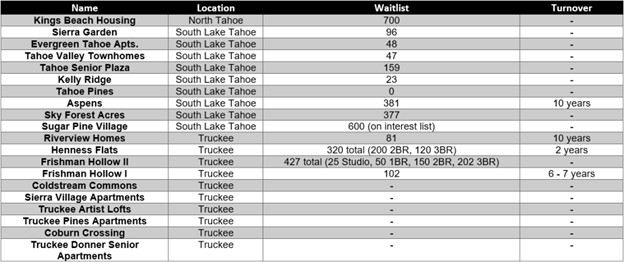Housing 101: ADU Lessons Learned
July 16, 2025
What Homeowners Should Know Before Building
ADUs Are Hard, But Prefabs May Offer a Solution
When we launched the Tahoe Housing Hub’s ADU Accelerator Pilot Program in late 2024, we were ambitious. We set out to support the construction of 20 accessory dwelling units (ADUs) in two years and build momentum from there.
The response was strong – over 100 people joined our interest list prior to launching the program, and more than 60 homeowners have since completed applications. Its clear residents want to be part of the solution but building ADUs in the Tahoe-Truckee region is anything but easy.
A year in, we’ve learned the same challenges that make construction difficult in the Tahoe-Truckee region—high costs, short building seasons, and a complicated permitting process—also apply to ADUs. Building a small unit doesn’t necessarily mean small challenges.
In response, we’ve had to get creative – exploring new approaches to construction, design, financing, and permitting in hopes of making ADUs more feasible for homeowners.
Traditional Construction vs. Prefab
The cost of traditional ‘stick-built’ construction cost is simply too high for most people to build an ADU. To address this, we’ve researched financing options, local housing incentive programs, and explored prefab and modular construction companies to find a low-cost solution to our high snow load environment.
Prefab and modular units are built off-site in a controlled environment, then transported and installed on your property. The quality is excellent, energy efficient, and often incorporates sustainable design and construction materials. They can also reduce construction time and minimize weather delays. You can get anything from a 450 to a 1200 square foot ADU built this way, and the costs are significantly less than traditional construction.
If you’re considering prefab, it’s essential to do your homework. Some companies don’t have experience building in our region, and many models aren’t designed to meet our snow load or energy efficiency requirements. Ask if they’ve installed ADUs in the Tahoe region, whether their models are engineered to meet local codes, and if they can provide references from similar mountain climates. Also, be sure to compare the total cost of the project—not just the base price of the unit. Site work, foundation, utility hookups, and permits can significantly increase the final price.
The Town of Truckee has more detailed information on the different types of prefab ADUs, links to snow load requirements and local building and design criteria. Their site also provides links to several prefab companies. It’s important to note that the town’s prefab company list is informational only, and some of those companies may not be able to provide a product that meets the required snow loads in our area.
How the ADU Accelerator Can Help
If you are interested in a prefab ADU, please reach out to us. We are currently developing a list of prefab ADU companies with products that meet our region’s snow load requirements that we hope will help homeowners as they explore prefab ADU options.
Every ADU that is built in conjunction with our ADU Accelerator Pilot Program provides a home for a local worker. As we continue to learn what works—and what doesn’t—we’re focused on helping homeowners navigate the complexities of building in this region. Program participants receive free technical assistance as they navigate the permitting and construction process. We also cover all or some of the cost of additional pre-construction services like site surveys, land use planning, engineering and design.
Homeowners who participate in the program agree to rent their ADU to a local worker and can choose two different options: rent at market rate for 5 years or rent at a lower rate set by HUD for 3 years. The ADU Accelerator program is made possible by a grant from the Martis Fund and the North Tahoe Community Alliance’s TBID/TOT Dollars at Work Program. For more information visit www.tahoehousinghub.org.


